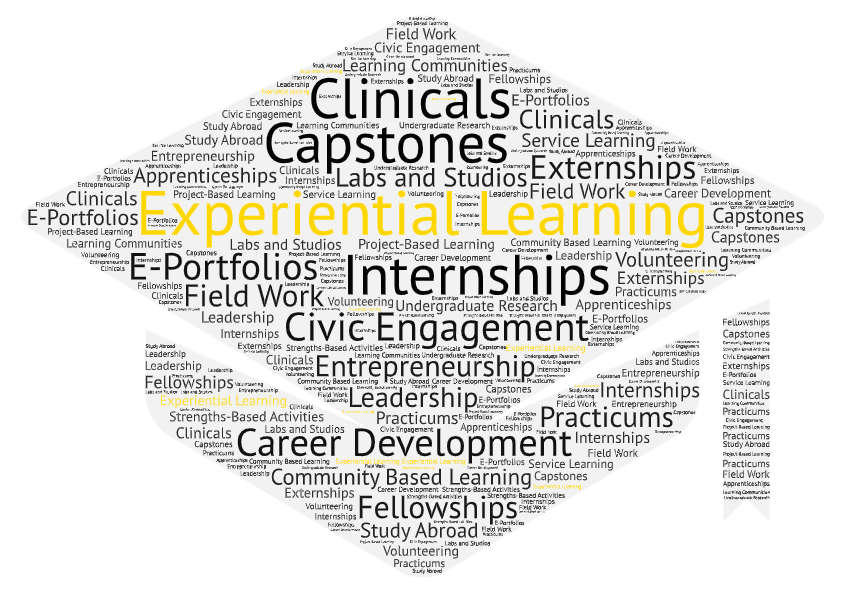About Experiential Learning and High-Impact Practices
Experiential Learning Definition

Experiential Learning (EL) is a dynamic educational approach where students learn by doing and engage in reflection on their experiences (Kolb, 1984). Unlike traditional lecture-based methods, experiential learning immerses students in practical, hands-on activities that take place in real-world settings or simulations. These activities may occur in the community, workplace, labs, expert-led environments, role-plays, or various other applied contexts and situations, essentially turning the entire campus and world beyond into an interactive classroom. This approach places students at the center of the learning process, fostering authentic and meaningful learning experiences that unleash students' potential for growth and transformation. As a result, experiential learning enhances knowledge, develops skills, clarifies values, and empowers students to contribute to their communities (AEE, 2024). Across the university, experiential learning is integrated into the curricular and cocurricular activities, both on and off campus. These experiential learning activities may take many different forms including capstone projects, e-portfolios, entrepreneurial ventures, freshmen seminar, internships, research, study abroad, and more.
Types of Experiential Learning Activities
Experiential learning is a broad term that encompases a variety of types of experiential learning activities. The university has categorized these experiential learning activities into four experiential learning categories: Field and Work Based Experiential Learning, Global and Community Based Experiential Learning, Project and Problem Based Experiential Learning, and Research and Writing Based Experiential Learning. A few examples include internships, research, entrepreneurship, study aboard, labs, capstones, leadership positions, community service, projects, intensive writing, practicums, e-portfolios, learning communities, simulations, volunteering, competitions, and more.
High-Impact Practices
AAC&U defines High-Impact Practices (HIPs) as "techniques and designs for teaching and learning that have proven to be beneficial for student engagement and successful learning among students from many backgrounds. Through intentional program design and advanced pedagogy, these types of practices can enhance student learning and work to narrow gaps in achievement across student populations." To be a high-impact practice, the experience must satisfy the definition established by George Kuh (2008, Kuh & O’Donnell, 2013) and his colleagues at the Association of American Colleges and Universities (AAC&U): achievement of deep learning, significant engagement gains, and positive differential impact on historically underserved student populations.
Benefits of HIPS and EL
High-Impact Practices, aslo known as HIPS, for experiential learning through research have demonstrated "evidence of significant educational benefits for students who participate in them - including and especially those from demographic groups historically underserved by higher education" (AACU, 2024). Students, alumni, faculty, staff, employers, and community partners directly benefit from participating in experiential learning activities and they report that these opportunities helped them in many ways. Learn more about the Benefits of High-Impact Practices and Experiential Learning.
Research and Scholarship of Experiential Learning
At the institutional, location, state, national, and global level there is great surge of interest in the research and scholarhip of experiential learning including:
- High Impact Practices from the American Association of Colleges and Universities
- National Society for Experiential Education
- Association for Experiential Education
- Institute for Experiential Learning
- Journal of Experiential Education
- BSU Library for Articles, Books, and More on Experiential Learning

